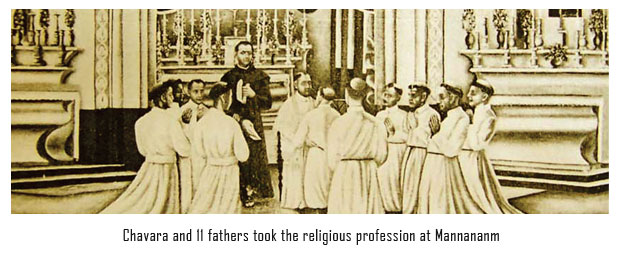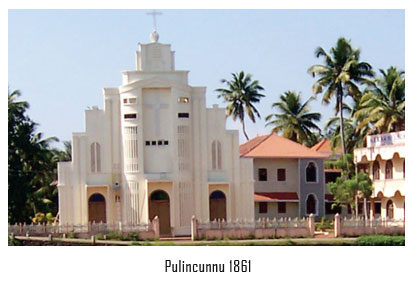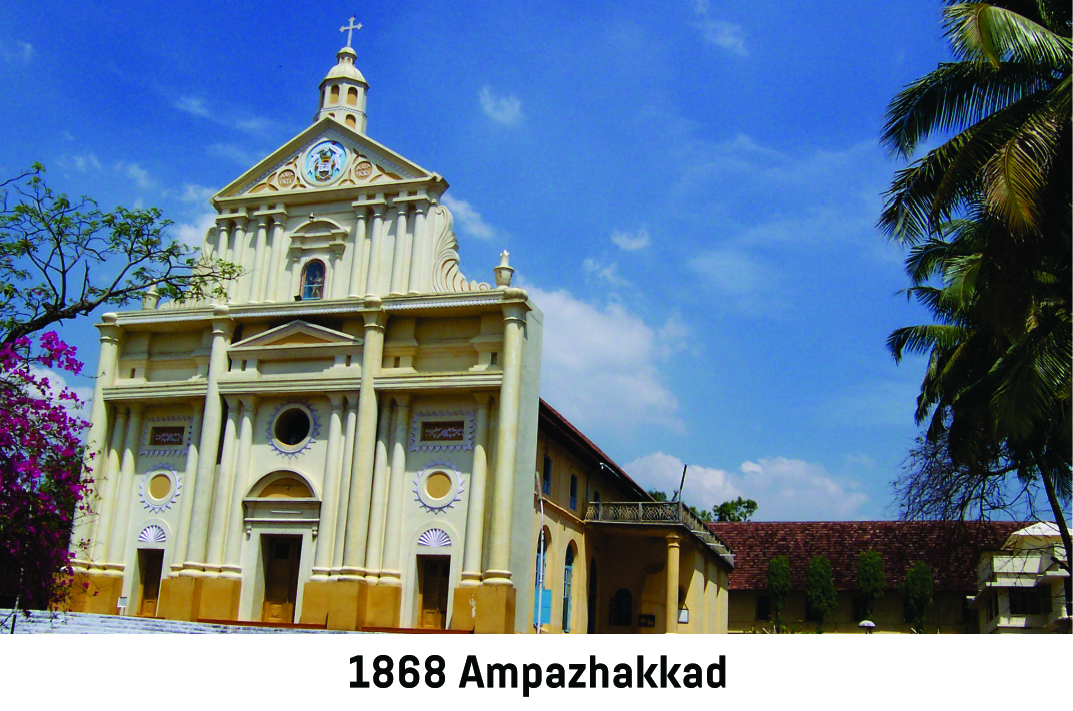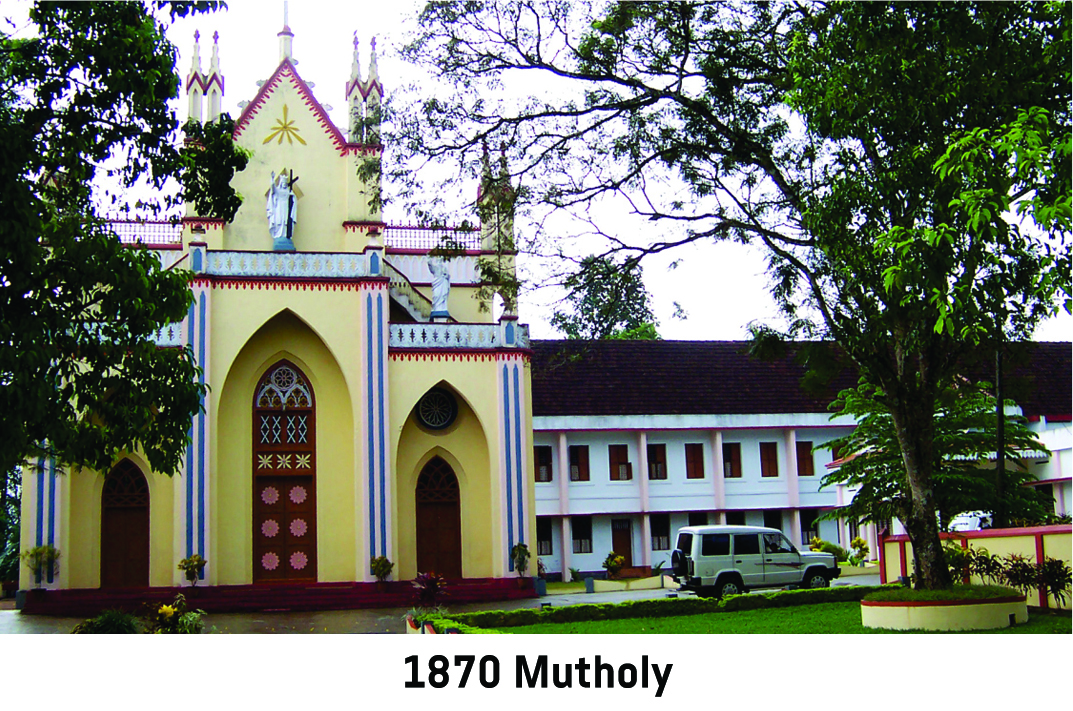A Short History of CMI Congregation
The Congregation of Carmelites of Mary Immaculate (CMI) is the first indigenous religious congregation in the Catholic Church of India.
Malpan Thomas Palackal, Malpan Thomas Porukara and Fr Kuriakose Elias Chavara of the Syro-Malabar Church,
a Church of apostolic origin, felt that “a lot of good had not been done due to the absence of a
Thapasu Bhavanam (House of Discipline) and a Darsana Veedu (House of Vision)”, had the challenging
vision of providing spiritual leadership and fostering unity and growth in the Kerala Church. With
the permission of Bishop Maurelius Stabilini, the then Vicar Apostolic of Verapoly, they founded a
religious house at Mannanam on 11 May 1831. Jacob Kanianthara who later became the first professed
brother in the Congregation, cooperated with the founding fathers from the beginning. The name of
the Congregation was ‘Servants of Mary Immaculate’.

Soon, some more priests and clerics joined the founding fathers and thus a small religious community
took shape. On 8 December 1855, the religious Congregation was canonically approved and the first
eleven fathers made their religious profession. Blessed Chavara, the only surviving founder,
was appointed the first superior of the Congregation. During the early period of the religious
Congregation, the Vicars Apostolic of Verapoly were Carmelites and thus the congregation had
come under the Carmelite influence; hence, the rules of the Carmelites with some modifications
were given to them in 1855. In 1860, the community was affiliated to the Order of Carmelites
Discalced with the name, ‘Third Order of the Carmelites Discalced’ (TOCD). The Constitutions
were approved ad experimentum by the Apostolic See in 1885. In 1958, the name was changed to
‘Carmelites of Mary Immaculate’ (CMI). The Congregation was granted pontifical exemption in 1967.
From the very beginning, the religious life in the congregation was rooted in the Indian,
Oriental and Carmelite spiritual traditions. Being contemplatives in action, the members
engaged in such activities as the Church in Kerala was in need of at particular times.
They preached retreats, conducted seminaries for the training of the local clergy, met
the challenge of educating the youth and disseminating Christian literature, laboured for
the propogation of faith and for the reunion of separated brethren, undertook works of mercy,
and started charitable institutions.



